DYRK kinase Pom1 drives F-BAR protein Cdc15 from the membrane to promote medial division
- PMID: 32101481
- PMCID: PMC7185970
- DOI: 10.1091/mbc.E20-01-0026
DYRK kinase Pom1 drives F-BAR protein Cdc15 from the membrane to promote medial division
Abstract
In many organisms, positive and negative signals cooperate to position the division site for cytokinesis. In the rod-shaped fission yeast Schizosaccharomyces pombe, symmetric division is achieved through anillin/Mid1-dependent positive cues released from the central nucleus and negative signals from the DYRK-family polarity kinase Pom1 at cell tips. Here we establish that Pom1's kinase activity prevents septation at cell tips even if Mid1 is absent or mislocalized. We also find that Pom1 phosphorylation of F-BAR protein Cdc15, a major scaffold of the division apparatus, disrupts Cdc15's ability to bind membranes and paxillin, Pxl1, thereby inhibiting Cdc15's function in cytokinesis. A Cdc15 mutant carrying phosphomimetic versions of Pom1 sites or deletion of Cdc15 binding partners suppresses division at cell tips in cells lacking both Mid1 and Pom1 signals. Thus, inhibition of Cdc15-scaffolded septum formation at cell poles is a key Pom1 mechanism that ensures medial division.
Figures
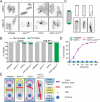

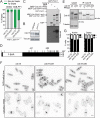
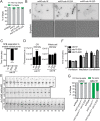
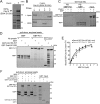
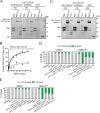

Similar articles
-
The DYRK-family kinase Pom1 phosphorylates the F-BAR protein Cdc15 to prevent division at cell poles.J Cell Biol. 2015 Nov 9;211(3):653-68. doi: 10.1083/jcb.201504073. J Cell Biol. 2015. Retraction in: J Cell Biol. 2017 Mar 6;216(3):849. doi: 10.1083/jcb.20150407302062017r. PMID: 26553932 Free PMC article. Retracted.
-
Multiple polarity kinases inhibit phase separation of F-BAR protein Cdc15 and antagonize cytokinetic ring assembly in fission yeast.Elife. 2023 Feb 7;12:e83062. doi: 10.7554/eLife.83062. Elife. 2023. PMID: 36749320 Free PMC article.
-
Cooperation between Paxillin-like Protein Pxl1 and Glucan Synthase Bgs1 Is Essential for Actomyosin Ring Stability and Septum Formation in Fission Yeast.PLoS Genet. 2015 Jul 1;11(7):e1005358. doi: 10.1371/journal.pgen.1005358. eCollection 2015 Jul. PLoS Genet. 2015. PMID: 26132084 Free PMC article.
-
Mid1/anillin and the spatial regulation of cytokinesis in fission yeast.Cytoskeleton (Hoboken). 2012 Oct;69(10):764-77. doi: 10.1002/cm.21056. Epub 2012 Aug 20. Cytoskeleton (Hoboken). 2012. PMID: 22888038 Review.
-
Microtubule-dependent cell morphogenesis in the fission yeast.Trends Cell Biol. 2009 Sep;19(9):447-54. doi: 10.1016/j.tcb.2009.06.003. Epub 2009 Aug 25. Trends Cell Biol. 2009. PMID: 19713114 Review.
Cited by
-
Cdk1 phosphorylation of fission yeast paxillin inhibits its cytokinetic ring localization.Mol Biol Cell. 2021 Aug 15;32(17):1534-1544. doi: 10.1091/mbc.E20-12-0807. Epub 2021 Jun 16. Mol Biol Cell. 2021. PMID: 34133210 Free PMC article.
-
The role of anillin/Mid1p during medial division and cytokinesis: from fission yeast to cancer cells.Cell Cycle. 2023 Mar-Mar;22(6):633-644. doi: 10.1080/15384101.2022.2147655. Epub 2022 Nov 25. Cell Cycle. 2023. PMID: 36426865 Free PMC article. Review.
-
Phosphorylation in the intrinsically disordered region of F-BAR protein Imp2 regulates its contractile ring recruitment.J Cell Sci. 2021 Aug 15;134(16):jcs258645. doi: 10.1242/jcs.258645. Epub 2021 Aug 17. J Cell Sci. 2021. PMID: 34402513 Free PMC article.
-
Processes Controlling the Contractile Ring during Cytokinesis in Fission Yeast, Including the Role of ESCRT Proteins.J Fungi (Basel). 2024 Feb 15;10(2):154. doi: 10.3390/jof10020154. J Fungi (Basel). 2024. PMID: 38392827 Free PMC article. Review.
-
Imp2p forms actin-dependent clusters and imparts stiffness to the contractile ring.Mol Biol Cell. 2022 Dec 1;33(14):ar145. doi: 10.1091/mbc.E22-06-0221. Epub 2022 Oct 26. Mol Biol Cell. 2022. PMID: 36287824 Free PMC article.
References
-
- Almonacid M, Moseley JB, Janvore J, Mayeux A, Fraisier V, Nurse P, Paoletti A. (2009). Spatial control of cytokinesis by Cdr2 kinase and Mid1/anillin nuclear export. Curr Biol , 961–966. - PubMed
-
- Bahler J, Wu JQ, Longtine MS, Shah NG, McKenzie A, 3rd, Steever AB, Wach A, Philippsen P, Pringle JR. (1998). Heterologous modules for efficient and versatile PCR-based gene targeting in Schizosaccharomyces pombe . Yeast , 943–951. - PubMed
Publication types
MeSH terms
Substances
Grants and funding
LinkOut - more resources
Full Text Sources
Molecular Biology Databases

